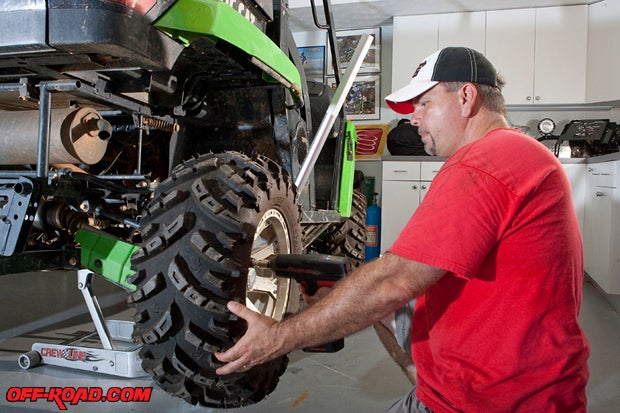
The world of off-road adventures has taken a turn recently with the popularity of the SXS, or side-by-side, influence. The units are large and fun to ride but can be a bear to work on. Recently, I had the pleasure of repairing one of these beasts and I thought Iíd share with you how that went.
The CV (constant velocity) axle in a side-by-side can be subjected to any number of trail hazards. This axle took a large branch in the boot, and with that tear at the beginning of our ride the problems began. The boot let all of the fresh stream water and mud into the CV joint, and before we knew it the right rear wheel was not turning at all. Needles to say, our constant-velocity joint was trashed. Hereís just a brief but hopefully helpful guide to changing the axle in a side-by-sideís independent suspension. This happens to be an Arctic Cat Prowler but the process will be similar on most rear-axle change-outs.
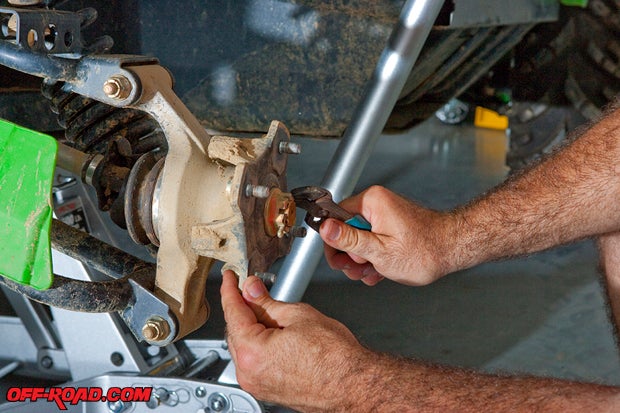
The first thing I like to start with is a clean shop and the tools Iíll need to get the machine apart. I lay out everything I need beforehand because it makes the job a bit smoother. Hereís a short list of the tools I needed:
Air or Battery Impact Wrench (typical lug wrench will do)
Metric wrenches: 10, 12, 14, 15, 17
Needle-Nose Pliers
Rubber Hammer
Anti-Seize Product: Lipstick form or brush-on application
Large Floor Jack
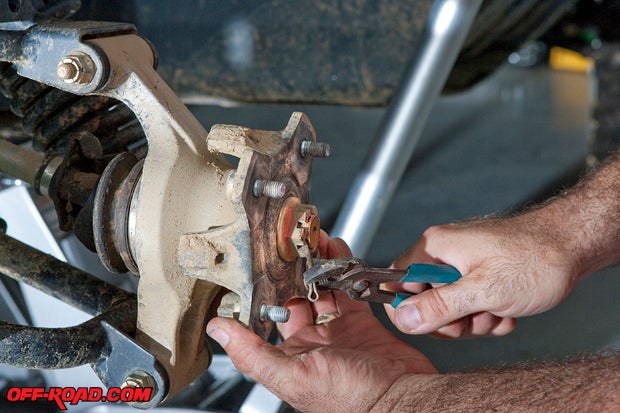
A good starting point would be to make sure you have the correct replacement axle and then grab your impact wrench or socket wrench and begin loosening all four lug nuts. Now remove the tire and wheel and sit it to the side out of the way so you have plenty of workspace. On our Arctic Cat 650, we needed to remove the cotter pin and axle nut first before trying to remove the wheel hub. The next step is to pull the hub off and unbolt the Knuckle assembly. There are two bolts, one on top and one on bottom. This allows the knuckle to pull out toward you. Some knuckle assemblies have dust covers over the bolt holes that can fall off once the knuckle is removed so be sure to check for those.
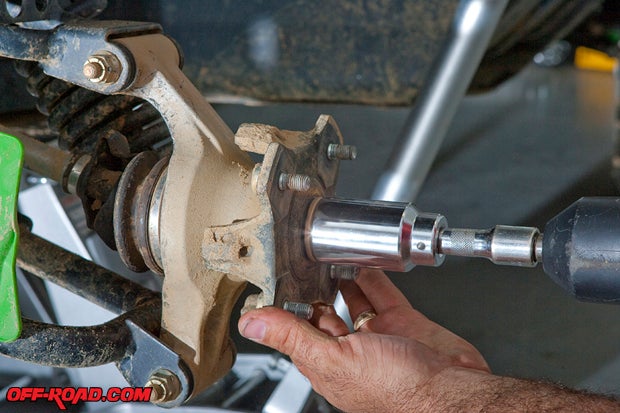
After persuading the knuckle out of the a-arms, the axle should slip out of the splines on the knuckle and then you can set the knuckle aside until the reassembly. If the axle has broken at the CV joint closest to the wheel or if the axle is stuck in the knuckle, then the dead blow/rubber hammer can be used to coax it out. Using a dead blow or rubber hammer ensures that you donít scar up the threads or anything else. Remove the remaining axle by pulling it straight out from the side. The axle can be coaxed from its fixture by simply tugging on the end closest to the wheel. This may take a few tries to be successful, but it will come out. It is always a great idea to check any bearings that are easily accessible while the machine is apart too.
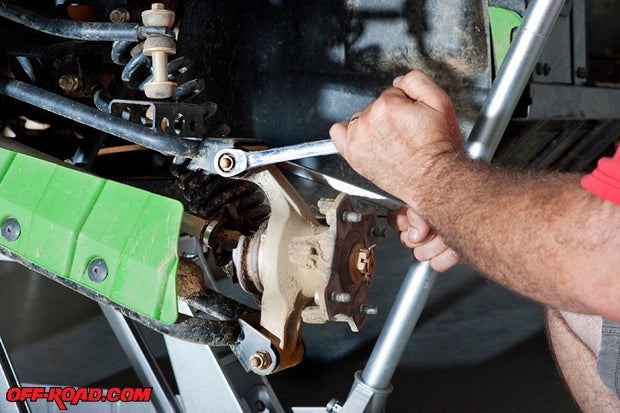
Reach for the new axle assembly and make sure to add a little differential oil or grease to the seal before reinstalling the new axle into the transmission. I usually add just a little anti-seize lubricant to the axle splines on both ends to ensure the next time I have to tear into the machine everything comes apart easily. After aligning the splines on the axle, it will slip into the transmission with little effort. The circular clip on the axle will compress and then snap into place when it finds the cut in the receiver. This may take a little force to get the axle properly seated but most are easily installed.
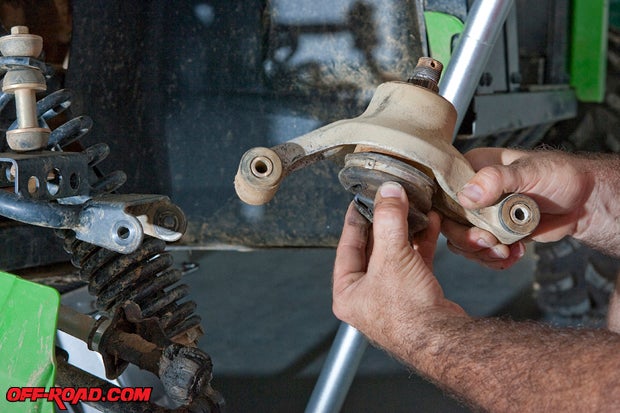
Now you need to slip the knuckle back over the wheel side end of your new CV axle and reassemble. You may have to bump the knuckle on with your rubber hammer. Install the wheel hub, axle nut and cotter pin. Reinstall your wheel, let your trusty jack down and roll the machine forward and reverse just a bit to make sure it moves freely.
Be sure to check everything twice or three times before hitting the trail again just to be sure you tightened all the bolts and lug nuts. And thatís how easy it really is.
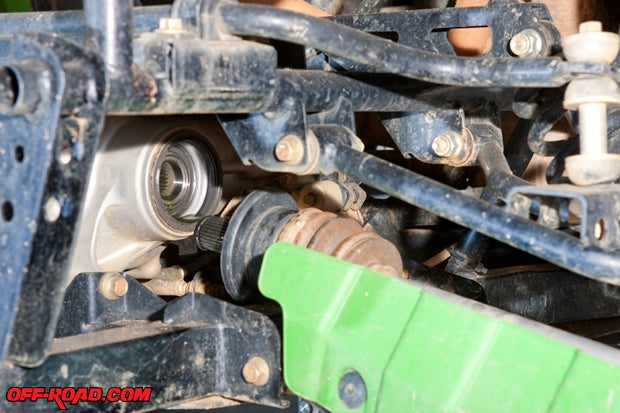
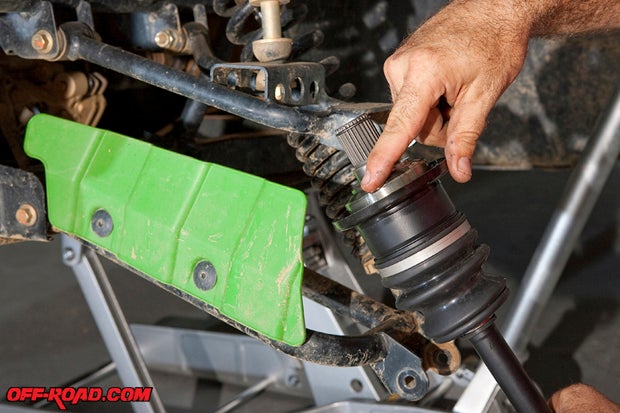
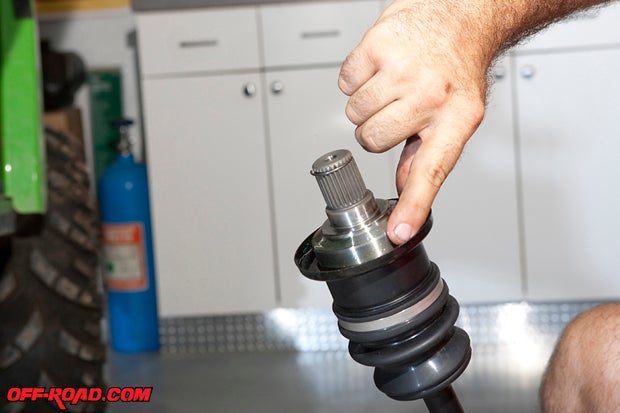
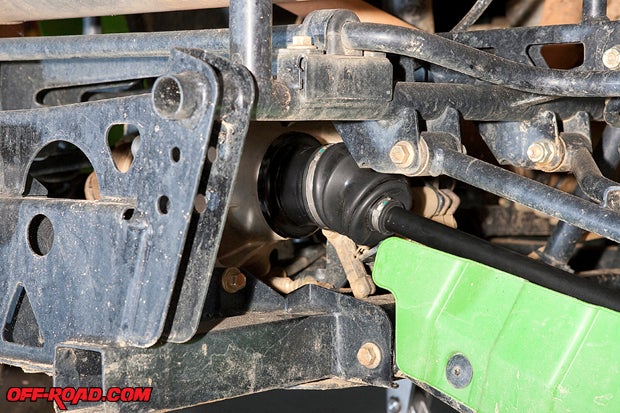
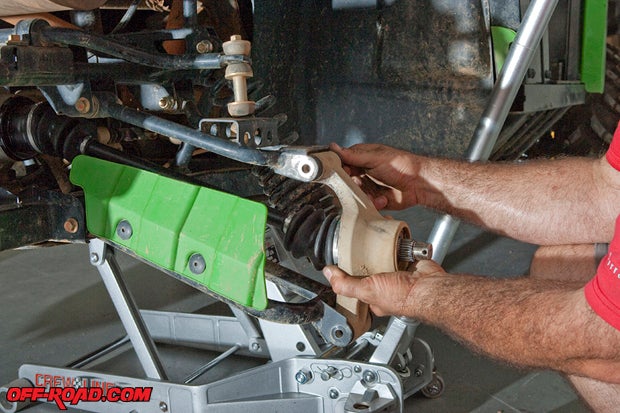
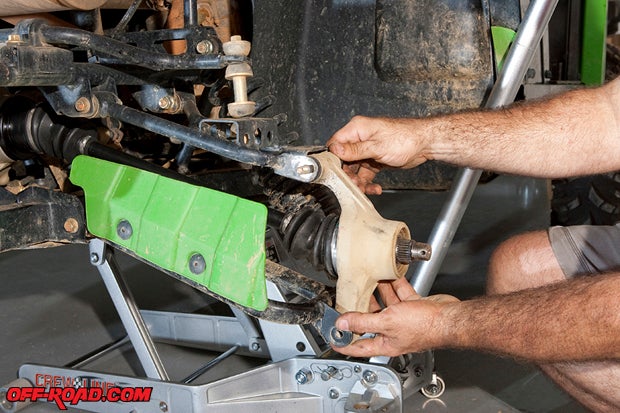
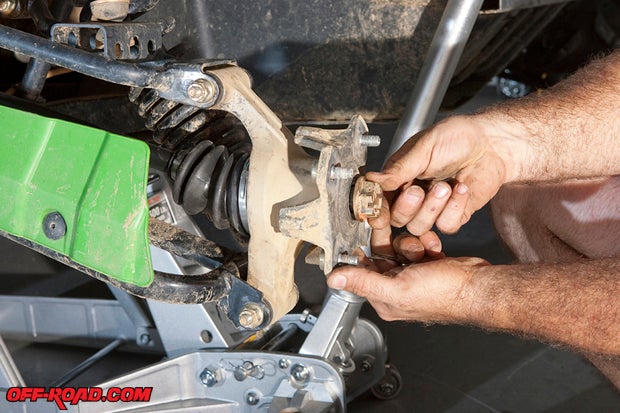
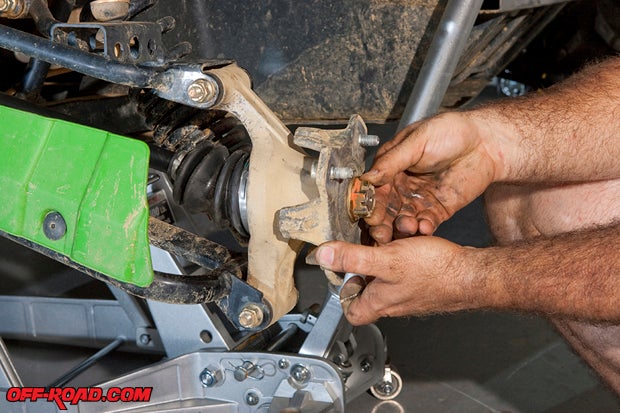
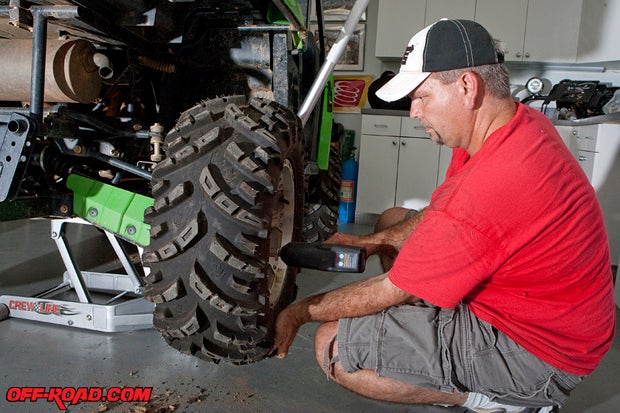


 Your Privacy Choices
Your Privacy Choices